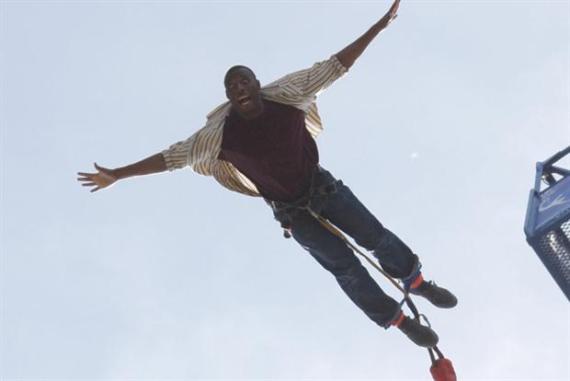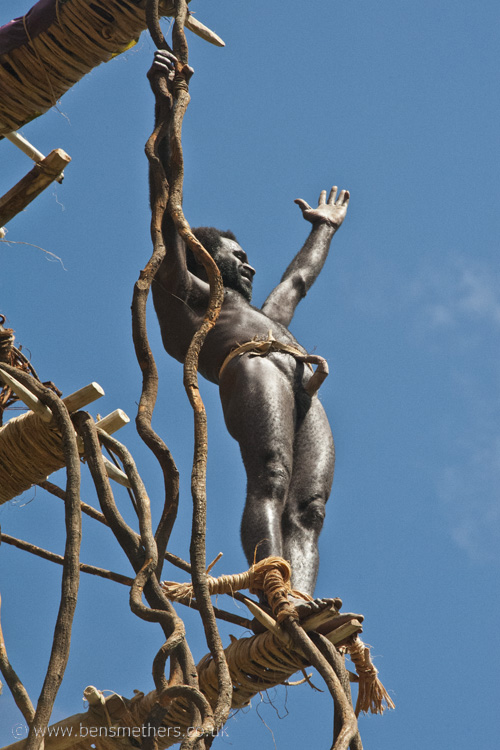In Africa News. Bungee jumping has been popular in England since the late 1970s, when members of the Oxford University Dangerous Sports Club, jumped 250 feet off the Clifton Suspension Bridge in Bristol.
Soon after, it became a Western phenomenon, and people started jumping from bridges and other high landmarks.
Soon the sport became a regular weekly feature among young people seeking the ultimate thrill and sites were often set up anywhere there was open or derelict land with plenty of room for a high crane and enough room to swing from the elastic ropes.
In the early days, the sport became an elitist pastime among the rich as few working class British people could afford the high prices needed to participate in the activity.
The traditional custom of the Naghol or land diving originated on the remote Pacific Island of Pentecost, over a thousand years ago, and is a ceremony which is carried out by the men of the village. Legend has it, that the practice of Naghol began after a woman decided to run away from her abusive husband.
She ran into the forest, pursued by him and in her bid to escape, she climbed a tree and tied vines from the tree to her ankles. When she jumped the vines broke her fall, but her husband who did not tie the vines to his ankles, jumped and plummeted to his death.
Because the husband was tricked into jumping, women are forbidden to climb the tower; however, they can take part in the ceremony as spectators and support it by singing, chanting and dancing.
According to ancient tradition, the Naghol is a yam harvest ceremony. From April to June, men from the southern part of the island build towers of up to a hundred feet high from which to jump.
In a culture where the village elders have traditionally taught all aspects of masculinity to their young men, the younger men are trained in the process of building the tower. They are instructed in how to select the best wood and jump ropes and how to secure the vines to the trees to stabilize the tower.
This is done with extreme care, for no nails or ropes are used in the process. Afterwards, an experienced elder carefully selects vines according to the diver’s weight, which is then attached to their ankles to break their fall.
However, unlike the elastic rope used in bungee jumping, these vines have no elasticity and there are no safety helmets or nets to break their fall, any miscalculation in vine length or too dry or weak vines could result in death or serious injury.
Just before a diver jumps from the platform, he could utter anything he wants to because the jump could be his last. A successful jump happens when the diver jumps close enough for his shoulders or head to touch the ground.
By plunging headfirst close to the ground, the diver was literally blessing the ground to ensure an abundant yam harvest. Another reason for performing the Naghol is as a rite of passage for young males to step into manhood. The height of each diver’s jump is determined by his age and experience.
The villagers believe that the higher the jump, the more blessings they will receive. Young boys begin by jumping from the lower rungs of the platform. Divers that are more experienced jump from higher rungs and the most experienced from the highest. Some young men use the Naghol ceremonies as a platform to attract women. By exhibiting boldness and courage, they hope to attract a wife.
Today, this ceremony is also performed for the entertainment of Western tourists. However, when people who are not native to a country, transfer a practice from one country to another, often the ideologies and concepts of that original cultural practice are lost and become nothing more than a form of entertainment to its new hosts.
Bungee jumping in European societies is nothing more than an extreme sport. Nonetheless, it should not be forgotten that the origin of what has become an extreme sport in western society, lies in the cultural norms and religious belief systems of an African people.






